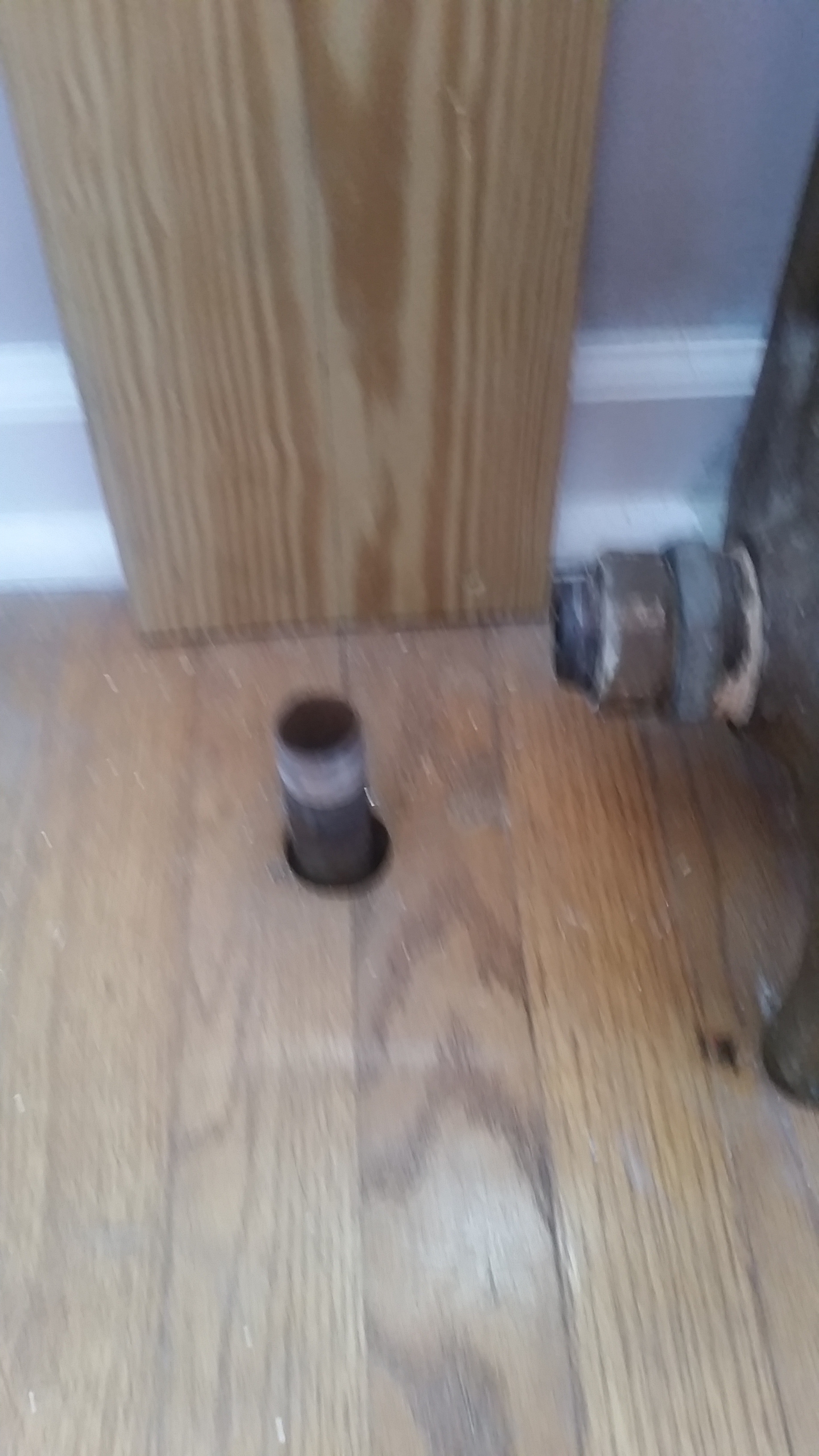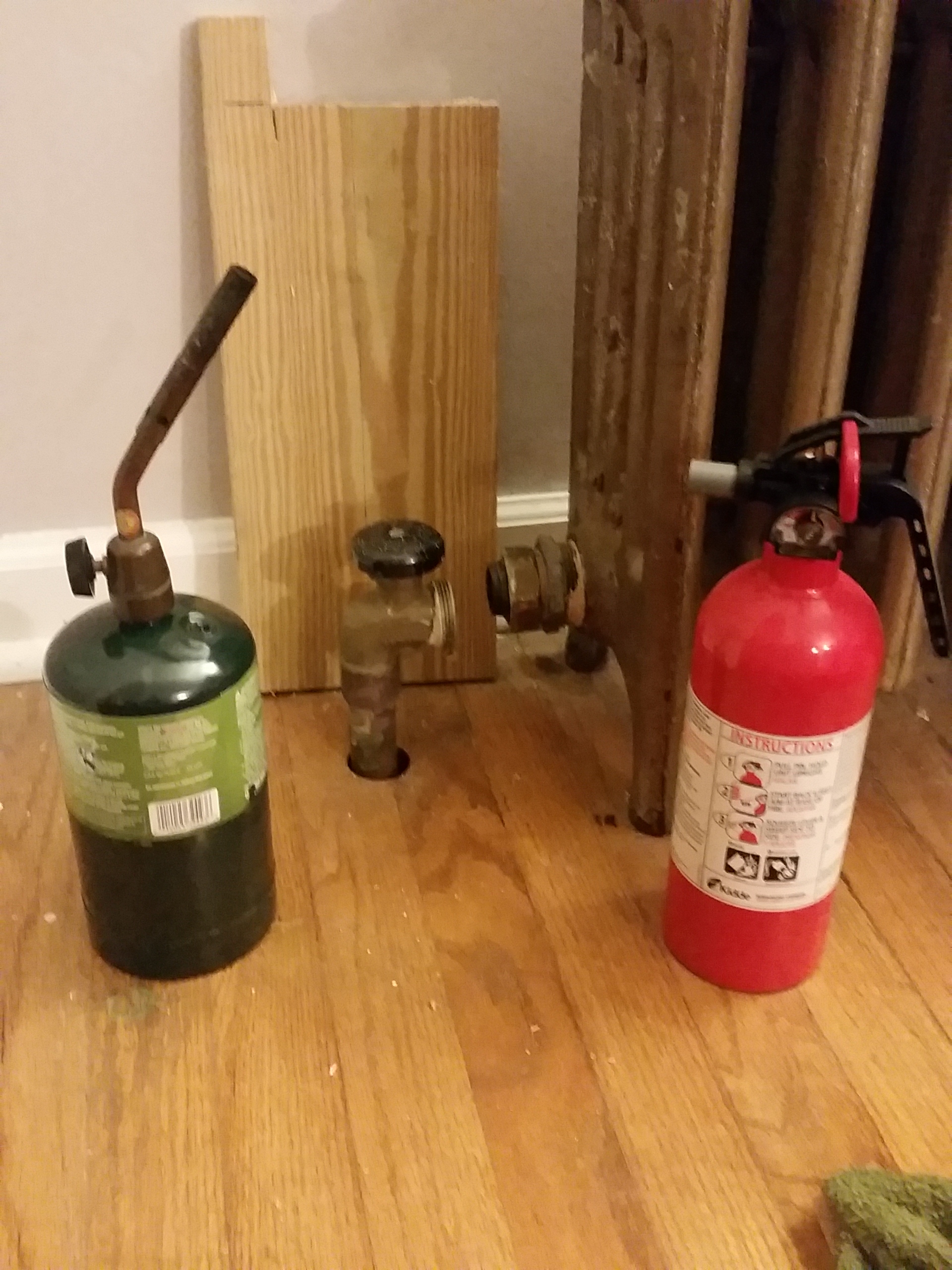Welcome! Here are the website rules, as well as some tips for using this forum.
Need to contact us? Visit https://heatinghelp.com/contact-us/.
Click here to Find a Contractor in your area.
Steam Radiator Not Heating Up
lula1121
Member Posts: 8
I have a steam radiator that is not heating up. It is a one pipe system. I have changed the air valve on it and changed the valve as well. When I was changing the valve I tipped the radiator up and water did come out so when I hooked it back up I made sure to put it at a 1 degree angle tilting to the pipe. Some times the first coil of the radiator will get lukewarm but the rest will be cold. Last winter I replaced the air valve in the basement on that pipe as well because water came out of it. I have only had this house for 1 year and a half and this is my second winter and the radiator has never seem to gotten hot. Luckily I can close that room off and keep it warmer in the rest of the upstairs. I'm not sure if there is a blockage or not. The pipe that runs to this radiator is the only one made of copper the rest are black pipe. Also since it's on the second floor not sure if I want to be ripping apart walls just yet to replace the whole thing.
0
Comments
-
pics of the piping beneath the radiator, the radiator itself and pics of the main vent you replaced0
-
What kinf vents do all the radiators have?
BobSmith G8-3 with EZ Gas @ 90,000 BTU, Single pipe steam
Vaporstat with a 12oz cut-out and 4oz cut-in
3PSI gauge0 -
And... how big is that copper pipe? If it's too small the radiator can't possibly get enough steam.Br. Jamie, osb
Building superintendent/caretaker, 7200 sq. ft. historic house museum with dependencies in New England0 -
I will take pics tonight. The copper pipe is 1". They all have non adjustable air valves. I did buy 1 adjustable one but had no idea what to set it on.0
-



Found some pictures of when I replaced the valvue. This first picture is pretty blurry but its after the old valve is off and the new one is about to go on.
Second picture is of the old valve.
Third picture is the new valve on.
I will take the other pictures tonight0 -
Wider angle pic of the entire radiator? Include a picture of the vent. Trying to get a sense of the size of the radiator. Is that a 1" pipe coming up thru the floor?
Just FYI, no teflon on the mating surfaces of a union next time.0 -
I'm not a pro, but perhaps condensation is filling that copper before steam can reach the rad? how far does that copper run from where it's connected ?0
-
First picture is of the air valve on the radiator.
Second is of whole radiator.
Third connecting valve to radiator.
Fourth is valve connecting to pipe.0 -
First picture is of pipes coming from boiler.
Second is pipes coming from boiler.
Third pipe going to rad in basement.
Fourth pipe continue to rad in basement.
Fifth second pipe that connects to pipe in other pics.
Sixth showing both pipes running side by side.
Seventh shows them connecting.
Eighth a valve and air valve.
Ninth pipe curving about to go into floor.0 -
Vent on radiator needs to be straight up and down. I'd replace that vent with something like a Gorton or Maid o Mist
No hartford loop, but dry returns.
The third picture, the piping that goes to radiator looks like it has been changed and increases after coming off the takeoff off the main.
The fourth pipe, the pipe that has been converted to copper, looks like it has a valve on it? and there's some kind of tee? That area is confusing... can't see how condensate will properly come back.
Someone has seriously knuckleheaded your system there unfortunately.
0 -
From the looks of your seventh and eighth pictures in the second set, the pipe past that shut-off valve looks reduced and pitched the wrong way, allowing water to pool in that area, and the radiator looks too level and not pitched towards the supply pipe. Also, turn that radiator vent vertical. That can affect its ability to open and close.
Also, I can't tell from the rest of the piping but this looks like a counterflow system. looks like there may be a couple locations on the mains where they piping has been reduced and may also allow water to pool.
The vent in the 7th and 8th picture looks like it is leaking (based on the staining on the wood above it.
We don't like copper on mains and above the water line but it is what it is.
Finally it looks like the header, above the boiler is not as high as it should be (24 to 28 inches minimum). That will cause wet steam.0 -
The vent on the 7th and 8th pics was replaced last year because it did leak. The vent on the radiator is so lose that it will not stay straight up like it is suppose to. Any way to fix that? The radiator is pitched at a 1 degree angle is that good or should it be more? What should the pitch be for everything? Could you explain more what a counterflow system is?0
-
You need to have someone drill and tap the radiator vent opening for a 1/4" hole and then use a 1/4" to 1/8" bushing in that newly tapped hole so that the vent is no longer loose. A loose vent can some day blow out of the hole and then you have a risk of scalding yourself or creating a wet mess when you are not home.
1 degree is not much pitch. How did you determine the 1 degree? Ideally, if that radiator could be pitched about a 1/4" from the vent end to the supply pipe end, it should be fine.
Pipes should be pitched about a quarter inch per 10 feet. more does not hurt anything.
A counter flow system is where the mains start out at thier lowest point, at the boiler ( pitched down towards the boiler (with appropriate drips near the boiler for condensate to drop to a short wet return at the boiler). Condensate then runs in the opposite direction to the steam going out from the boiler. Steam out from the boiler, condensate in the same pipe running back to the boiler.
In a parallel flow system, the mains start out at their highest point above the boiler and pitch downward from there so that both the steam and the condensate flow in the same direction and the condensate continues to run into a dry return, after the last radiator run-out off of the main. That dry return may continue in a loop around the basement and then drop down to a wet return before it gets back to the boiler or the return pipe may drop down to a wet return right after the last radiator run out and the wet return will run back to the boiler, below the boiler's water level.0 -
I determined the 1 degree pitch from the rigid level app you can get on your phone. What I also find weird is that I had used the app on some of the other radiators to see what they were pitched at and they are all level yet they all work great except for this 1 radiator. Thank you for telling me what a counter flow system is.0
-
The threads on that vent should be tapered. You might be able to tighten up the connection just by turning in the vent a few turns.
Here is what I would try. Remove the radiator vent. Start the boiler. If steam gets to the radiator, then turn off boiler. The problem is likely the radiator vent. If no steam gets to radiator, then the problem is likely in the piping.
I'm not sure if I'd trust a phone app to accurately measure 1 deg slope.0 -
A 'phone app? Good heavens. I would never use anything other than the longest level I could get my hands on that would fit!Br. Jamie, osb
Building superintendent/caretaker, 7200 sq. ft. historic house museum with dependencies in New England0 -
For the record a true 1° should be plenty. 1/4" per foot slope is 1.1934894° so you are almost at that with 1°. The pipe slope for counterflow steam is 1" in 10' which is only .4774538°. I know 1° doesn't sound like much, but it should be fine.0
-
When i turn the air valve on the radiator it will get tight but the valve will be facing down and I know it is suppose to be facing up. Any ideas with that?0
-
Add some teflon tape. It doesn't need to hold more than 2-3 psi at the most, usually less. You can try using a tap to clean out the threads a bit if it's not taking more than 4-5 turns.lula1121 said:When i turn the air valve on the radiator it will get tight but the valve will be facing down and I know it is suppose to be facing up. Any ideas with that?
0
Categories
- All Categories
- 85.2K THE MAIN WALL
- 3.1K A-C, Heat Pumps & Refrigeration
- 55 Biomass
- 424 Carbon Monoxide Awareness
- 73 Chimneys & Flues
- 1.9K Domestic Hot Water
- 5.2K Gas Heating
- 129 Geothermal
- 160 Indoor-Air Quality
- 3.3K Oil Heating
- 61 Pipe Deterioration
- 884 Plumbing
- 5.9K Radiant Heating
- 376 Solar
- 14.7K Strictly Steam
- 3.2K Thermostats and Controls
- 58 Water Quality
- 49 Industry Classes
- 89 Job Opportunities
- 28 Recall Announcements

